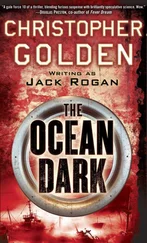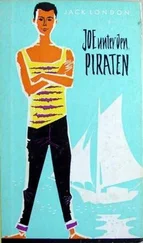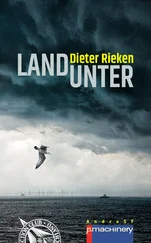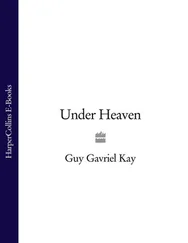Pottinger was trying to connect the top-level politics with the midlevel policies. Like everybody else, he knew that the Trump administration would set the US-China relationship in a new direction. He just didn’t know what direction that would be. Nobody did. As he put it to me later, “We were building the plane and flying it at the same time.”
This plan’s success, however, depended on one thing that Pottinger and those like him would never be able to convince Trump to commit to: a more aggressive foreign policy that required smart diplomacy, generous aid, and assiduous coalition building.
Trump wanted to fight allies and adversaries at the same time. His aversion to multilateralism ceded huge space to Beijing. Pottinger’s warnings against this stance went largely unheeded by the person who mattered most.
Coming to Blows
The charged dynamic inside the White House during this time led to another monumental fight between Navarro and Cohn in front of Trump.
After one Tuesday trade meeting, the team went up to the Oval Office to debrief the president. Navarro brought with him a huge, colorful chart laying out everything that he believed needed to be done on China and trade worldwide. The chart laid out in pictures Navarro’s plan for confronting what he called China’s “Seven Deadly Structural Sins,” including cyber hacking, intellectual property theft, forced technology transfer, government subsidies, dumping, fentanyl exports, and currency manipulation. Navarro knew Trump was always up for colorful charts. This one laid out the entire trade war—and Navarro’s battle plan full of tariffs and moves toward decoupling and new industrial policies—in easy-to-understand illustrations.
Navarro never even mentioned the chart to the others before showing it to Trump, much less got it cleared through Porter’s process. Cohn exploded, yelling at Navarro that he was giving bad advice to the president, that this was typical of him, and how dare he just spring it on everybody like that. “Cohn and Mnuchin never saw the chart,” Bannon later recalled. “They were all pissed off it had never been approved. To be honest, they definitely had some justification.”
Their anger didn’t just lie in the breach of protocol. Trump loved the chart, and Navarro’s suggestions for how to go about fighting the trade war.
“Let’s do it,” the president said. Even before the 301 investigation was complete, Trump was agreeing to move forward with the punishments—at least at that particular moment.
The officials went back down to the Roosevelt Room to fight some more. Navarro, like the old man in the bar who is always provoking everyone, told Cohn and Mnuchin that now that the president had been told the truth (or Navarro’s version of it, anyway), there was no way to stop him from following the trade war plan. “You guys are shut down,” he told them.
“For the first time, Peter in the Oval actually got twenty minutes to explain it to Trump,” one of the participants in the meeting said. “It is essentially what happened over the next couple of years, to be sure, with fits and starts.”
Another Trump administration insider would reflect on this time in more philosophical terms. “2017 sets the predicate for the economic war between the two countries,” a senior White House official said. “But the biggest war was inside our own system.”
Asia Is Calling but Nobody’s Home
All around the government, the Trump administration failed to fill crucial Asia-related diplomatic and professional posts in its first year, leaving huge gaps in embassies and agencies that were meant to deal with the China challenge and manage the alliances around the region. There’s no real explanation for this except gross negligence and broad dysfunction and a disdain for the bureaucracy writ large by some in the White House.
Ashley Tellis, the Council on Foreign Relations scholar whom Navarro and Bannon had wanted to become America’s top emissary to India, was nixed for that post after the crack researchers inside the presidential personnel office found an instance where he had written critically of Trump. Bill Haggerty, the head of presidential appointments, essentially appointed himself as ambassador to Japan, a place he had worked as a lawyer in the 1980s. K. T. McFarland was actually nominated to be ambassador to Singapore twice, because her first nomination expired due to Senate inaction. She eventually got the hint and withdrew.
Even before Trump’s election, the Chinese government had been so afraid of Admiral Harry Harris—another hawk whom Navarro and Bannon had penciled in for ambassador to Australia—becoming a senior US official dealing with China that it had mounted a multiyear smear campaign, even accusing him of being anti-China because of his Japanese “blood.” (His mother was Japanese.) Beijing had good reason to be concerned about the idea of the former head of US Pacific Command being put in charge of the relationship between Ameri ca and its close ally in that region. Harris came to fame in China circles during the Obama administration by coining the term “Great Wall of Sand” to describe China’s building of artificial islands on reefs and other reclaimed features in the South China Sea. He had strong bipartisan support in Congress.
But Beijing must have been relieved by the bureaucratic malaise in Washington. Harris would not be officially nominated to be Australian ambassador for another full year, long after Bannon was gone. And then, after Mike Pompeo took over for Tillerson, he would jilt Canberra yet again. Pompeo had his sights set on North Korean nuclear diplomacy and needed to appoint an envoy to the still vacant post of ambassador to South Korea. So Pompeo withdrew Harris’s nomination to be Australian envoy so he could send him to Seoul. The Australians were insulted, as well they should have been. They didn’t have a permanent American ambassador until two years after Trump’s election. This was one of the earliest instances of the Trump team mistreating the allies it needed to help it contest with Beijing.
The South Korean ambassador post had sat vacant for so long because the White House had, at the last minute, scuttled plans to nominate respected Korea hand and former National Security Council senior director for Asia Victor Cha after several months of vetting. The White House had even informed Seoul’s Blue House of Cha’s nomination and Seoul had signed off. But the nomination never came and was eventually abandoned without any real explanation. The news reports at the time concluded that Cha had been pushed aside because he opposed the idea of a “bloody nose” strike on North Korea. This “bloody nose” idea had been leaked as an example of an option under consideration at the White House—a limited strike to show Kim Jong Un who’s boss. An insanely dangerous idea, it was never really under serious consideration, but Cha seems to have thought that was why he lost the gig. But he never actually got a real explanation. White House officials at the time told me his security investigation had surfaced concerns about his father-in-law’s business relationships in South Korea. Nobody ever presented any evidence. Perhaps the notoriously finicky and paranoid White House personnel office staff saw his George W Bush administration credentials and killed the nomination on principle. It’s one of those Trump administration palace intrigue stories that even the actual players never figured out.
The State Department didn’t have a confirmed assistant secretary for East Asian and Pacific affairs for over two years, in part because Tillerson had insisted on nominating career foreign service officer Susan Thornton. For Bannon, Thornton was the poster child for a China policy proven wrong and controlled by alleged apologists and fellow travelers determined to maintain the status quo.
Читать дальше











